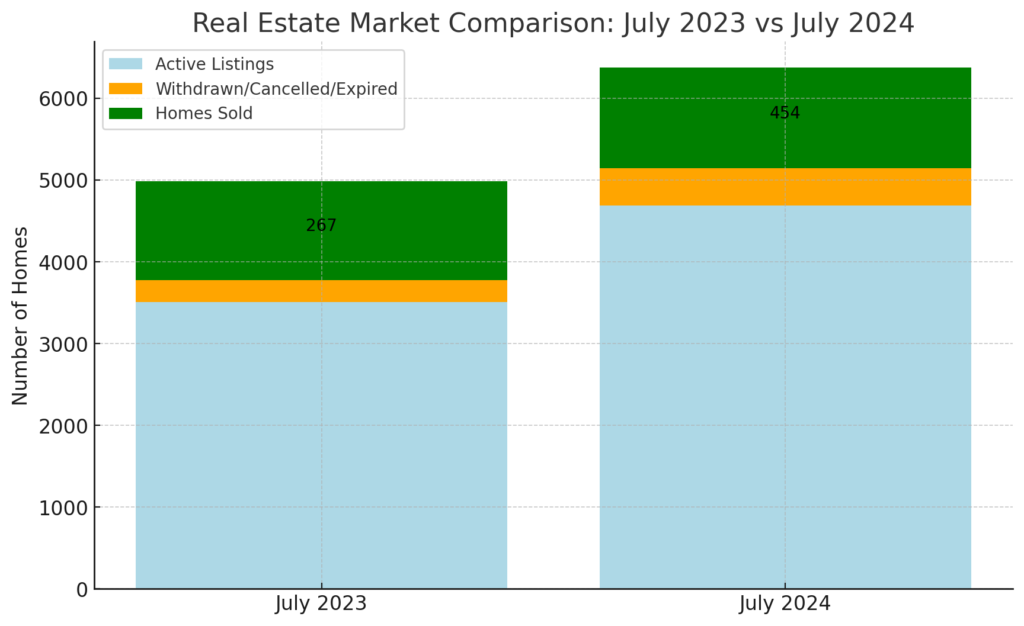When we quote statistics in the real estate industry, we most usually quote the metrics that reflect the successful sales. This is the way most are trained. However, in doing this type of analysis, it’s important to consider survivorship bias.
What is this bias?
It’s the tendency to consider only the successful set of data as the overall data. The Decision Lab defines this as:
Survivorship bias is a type of sample selection bias that occurs when an individual mistakes a visible successful subgroup as the entire group. In other words, survivorship bias occurs when an individual only considers the surviving observation without considering those data points that didn’t “survive” in the event.
I.e., in real estate if we only consider the survivors – the homes that sold – and not the ones that didn’t sale, we aren’t considering the whole market state.
Let’s take a look at Colorado Springs for July 2023 and July 2024.
In July 2023, there were 1,209 homes sold. There were 267 that were withdrawn, cancelled or expired. There were 3,511 active listings.
In July 2024, there were 1,233 homes sold. There were 454 that were withdrawn, cancelled or expired. There were 4,688 active listings.
The number of homes that didn’t sell increased by 70.04%.
How much weight should be give this in evaluating a home to list in this market? Particularly in light of the increase in actively listed homes by 1,177 homes (33.5%). The competition increased at the same time the number of homes not selling increased.

Data Extrapolated from the PPAR MLS 16 Aug 2024
These are asked as questions to explore for listing and buyers agents both.